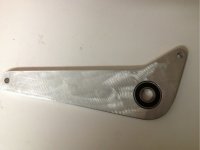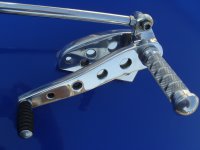derf9h
New Member
So my bearing for the shifting side of my rear sets is 28.5mm OD or 1.123in. How the hell do I drill a small enough hole to press fit this thing into my 1/4" aluminum plate? I tried a 1-1/8" hole saw just to see how big it was and it slipped in and fell through. A 1" bit is too small. Should I just drill a 1" and somehow perfectly grind out the inside to get the dimension I need? How do I do this with common power tools. I mean I have a nice drill press but I don't think I could sand the inside of the hole exactly the same all the way around donut fits perfectly. Should I get it close and the loctite it in?








